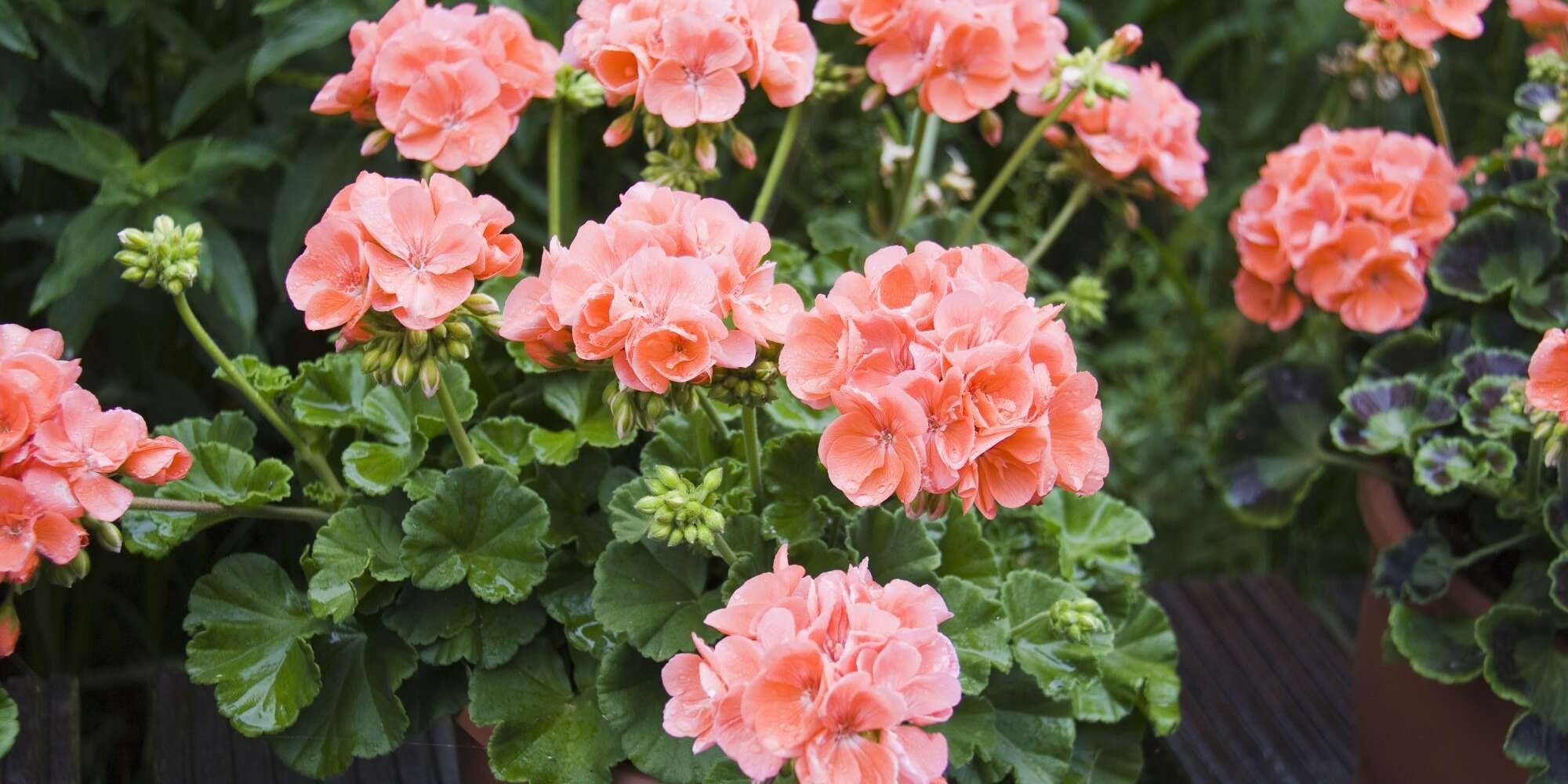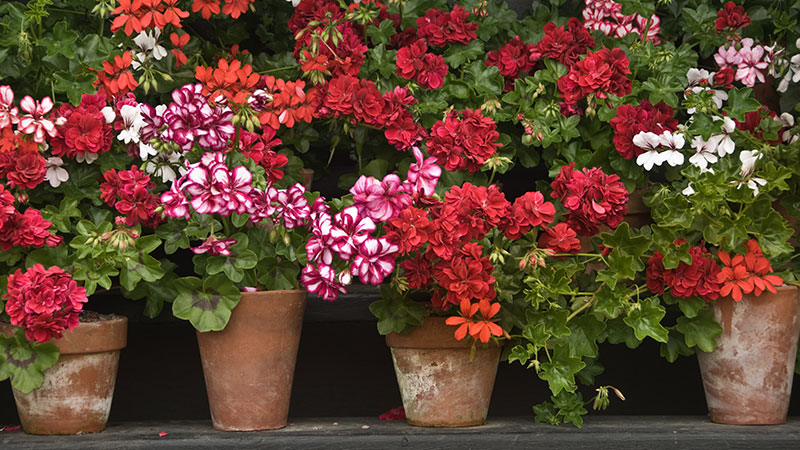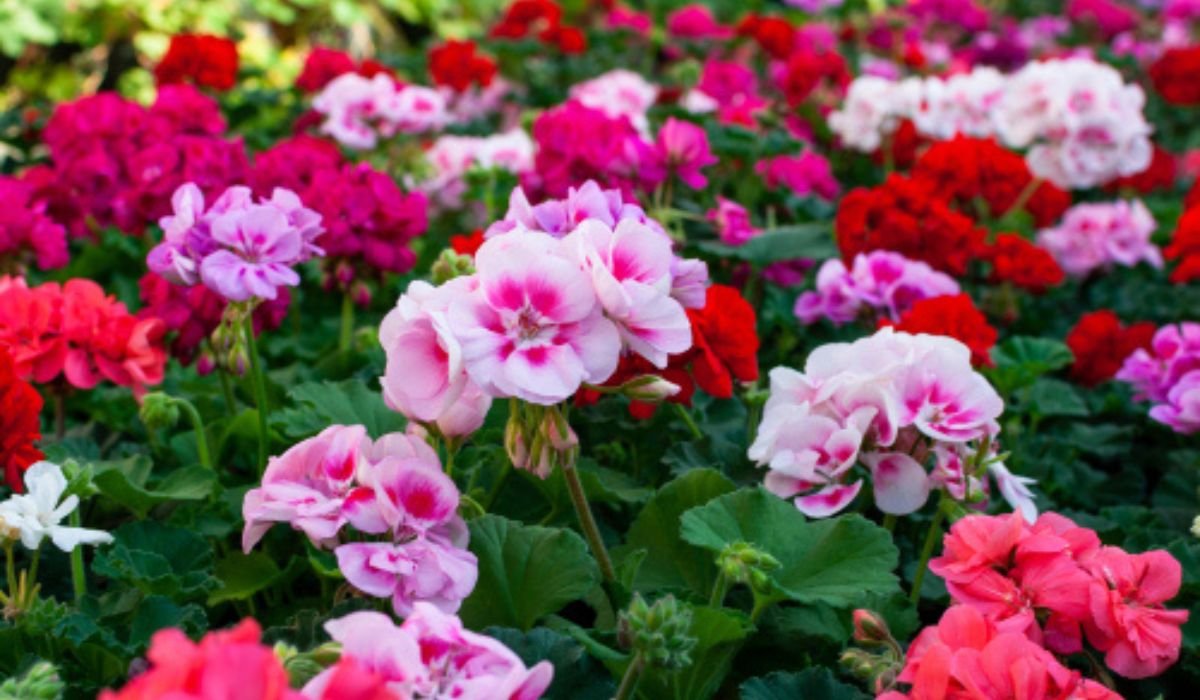A well-known and aromatic garden flower is the Geranium, commonly known as Crane’s-bill. Over 200 years ago, American farmers fell in love with this flower, and it’s easy to see why. Geraniums provide beautiful leaves that are just as lovely as the clusters of delicate blossoms they surround. Geranium planting may be quite simple and beneficial. You only need to know a few basic geranium flower care guidelines.

Source: Pinterest
Geranium: Key facts
| Scientific name | Geranium |
| Common name | Crane’s-bill |
| Family | Geraniaceae |
| Origin | South Africa |
| Appearance | Brightly coloured flowers in shades of pink, red, white, or orange |
| Bloom time | Late spring to early fall |
| Height | 6-24 inches |
| Light requirements | Full sun to partial shade |
| Water requirements | Moist but well-drained soil |
| Uses | Ornamental garden plant, scented varieties used in potpourri and perfumes |
| Propagation | Stem cuttings or division of root clumps |
| Toxicity | Non-toxic to humans and pets |
Geranium: Varieties
Geraniums have more alternatives than other plants. They come in a broad variety of bloom colours and types, foliage, and even perfume, thanks to their over 300 varieties. From a little 6 inches to many feet of flowers, they come in different sizes. The four geranium cultivars that are most often grown are:
Zonal Geraniums- The well-known geraniums are zonal varieties. Zonal geraniums are simple to cultivate, heat tolerant, and drought resistant, with single or double flowers in white, pink, red, burgundy, yellow, orange, and purple. There are several different hues available in the cultivars Classic, Tango, and Rocky Mountain.
Regal Geraniums: The Marsha Washington geranium is another name for the Regal variety. They are a fragile type with enormous, colourful flowers, but with the right care, they flourish. They thrive in colder climates and are unable to bloom in hot summer weather. The cultivars Ace High, Brown’s Butterfly, Blue Orchid, and Coral Sea are special examples.
Ivy Geraniums: Ivy Geraniums produce a lot of flower mounds that cascade. The glossy leaves have an ivy-like appearance. Early spring to the first fall frost is when the single, semi-double, and double blooms bloom. For a variety of flowers, try Summer Showers, Contessa, and White Mesh varieties.
Scented Geraniums: Geraniums with fragrant, velvety leaves are known as scented Geraniums. They are a favourite of many gardeners despite not blooming as profusely as other types. Popular smells include those of roses, apricots, apples, and mint, however there are countless varieties. Geranium cultivar names, including Chocolate Mint, Ginger, Lemon Balm, and Lime, frequently allude to their fragrance.

Source: Pinterest
Geranium: How to grow?
When to plant: Ten weeks before the final frost, sow seeds inside. In the spring, once all danger of frost has gone, sow seedlings outside. Spring is the ideal time to plant transplants grown in containers.
Where to plant: Plant geraniums in fertile, well-draining soil in a place that will receive at least 6 hours of sunlight every day.
How to plant: Start seedlings in 4-inch pots for potted plants, then relocate them as they enlarge. Depending on their growth habits, space in-ground geraniums 6 to 24 inches apart; do not cram them.
Growing Geraniums in pots
If you’re wondering how to plant geraniums in pots, don’t worry – it’s just as easy as planting them in the ground. The key is to use loose, well-draining soil and water them consistently while keeping fertilisation levels low. Geraniums can thrive in containers of all shapes and sizes, as long as they have drainage holes. To ensure success, place your geraniums in a sunny location, protected from damaging winds. Growing geraniums in pots has the added benefit of being able to move them inside during the winter, where they can thrive as houseplants. When spring arrives, gradually move them back outdoors after the last frost.
Geranium: Care tips
Pruning: Regular pruning helps maintain your plant in good condition. To promote branching, pinch back new growth many times from late spring to early summer. To encourage blooming and lengthen the flowering season, deadhead faded blooms often.
Geranium: Soil requirements
Geraniums demand rich, well-drained soil that is neutral to slightly alkaline.
Geranium: Fertiliser requirements
In the spring and early summer, use a balanced liquid fertiliser on a monthly basis. As the plant’s energy is diverted from flowering to the growth of the foliage when feeding too much, this might lead to poor blooming.
Geranium: Propagation
Geraniums may be readily multiplied by taking stem cuttings in the spring, late summer, or early fall, ideally during a flowering slowdown. By making a cut right above a stem node, you can promote the plant’s regrowth. Cut the fresh cutting once more right below a node that is 4 to 6 inches below the stem’s leafy end. Remove all leaves, save from the top few and place in warm, humid potting soil. Place in an area that is bright but not in direct sunlight after fully watering. Ten weeks before the last frost, seeds can be planted indoors. Keep seedlings in a warm area and give them only a little water until they emerge. After all danger of frost has gone, seedlings can be transplanted outside.
Geranium: Pests and diseases
Thrips, geranium budworms, spider mites, mealybugs, caterpillars, grey mould, and mildew are a few diseases and pests that may impact your geranium plants.
Geranium: Uses
Geraniums are known for their fragrant, brightly coloured blooms. They are popular garden plants and houseplants and have a number of uses beyond just being a decorative addition to the home or garden.
- Aromatherapy: Geraniums are often used in aromatherapy because of their pleasant scent. Their essential oils are extracted and used in various products, such as candles, perfumes, and skincare products, to help soothe and calm the mind and body.
- Insect repellent: Geraniums are also believed to have insect-repelling properties. Their strong scent is said to keep mosquitoes and other pests away, making them a great choice for outdoor gardens and patios.
- Skincare: Geranium essential oil is also used in skin care products due to its moisturising and healing properties. It can help soothe dry, irritated skin and may even help reduce the appearance of scars and age spots.
- Culinary: Geraniums are not commonly used in cooking, but their leaves and flowers can be used to flavour tea or as a garnish for desserts and drinks. They have a light, floral taste that complements many sweet dishes.
- Medicinal: In traditional medicine, geraniums have been used to treat a variety of conditions, including anxiety, depression, and menopausal symptoms. Although more research is needed to confirm these uses, some preliminary studies have shown promising results.
Geranium: Toxicity
Geraniums are considered to be non-toxic to humans and pets. They have been widely used as ornamental garden plants due to their brightly coloured flowers and pleasant fragrance.
FAQs
Which flowers complement Geraniums the best?
Geraniums are a traditional ally for roses since they deter numerous insects and pests. You may also grow them with other plants like maize, grapes, and cabbage that are frequently targeted by pests.
Are Geraniums suitable for hanging baskets?
Geranium hanging baskets are a great option since they are filled to the brim with vibrant blooms. Hang baskets in areas with lots of sunshine and protection from the wind. A southern-facing window is perfect if you're hanging Geraniums inside.
Housing News Desk is the news desk of leading online real estate portal, Housing.com. Housing News Desk focuses on a variety of topics such as real estate laws, taxes, current news, property trends, home loans, rentals, décor, green homes, home improvement, etc. The main objective of the news desk, is to cover the real estate sector from the perspective of providing information that is useful to the end-user.
Facebook: https://www.facebook.com/housing.com/
Twitter: https://twitter.com/Housing
Email: editor@housing.com











